Here are some typical upright repairs. This Astin Weight console is played regularly, resulting in worn hammers and broken hammer return springs. When the hammers become grooved and worn, they require filing and reshaping to restore proper tone. Unlike grand pianos which use gravity to return the hammers to rest, upright pianos need springs to assist in this process. When the springs are broken or not adjusted properly, poor or no repetition of notes can result.
First, the dust and debris is blown out of the action. The spring rail removed from the action brackets, and the felt strip covering the slots removed (most rails use holes instead of slots). This photo shows the old springs being removed (notice the broken ones that are just coil loops):
Rail with all the old springs removed:
Installing the new springs:
Rail with new springs and re-felted:
The hammers are filed to remove the “dead” felt and restore the proper shape found in newer hammers. Similar to turning (resurfacing) the brake rotors on a car, this can only be done so many times before replacement is necessary. This is the first filing for these hammers, so they can be filed at least one more time in the future. The photo shows some bass bichord hammers before and after filing:
Some trichord hammers before and after:
The spring rail is reinstalled, and with the action on the bench, this was a good time to lubricate the damper lift rod pivot pins and bushings so they continue to work properly without developing squeaks.
ShareAPR
2015

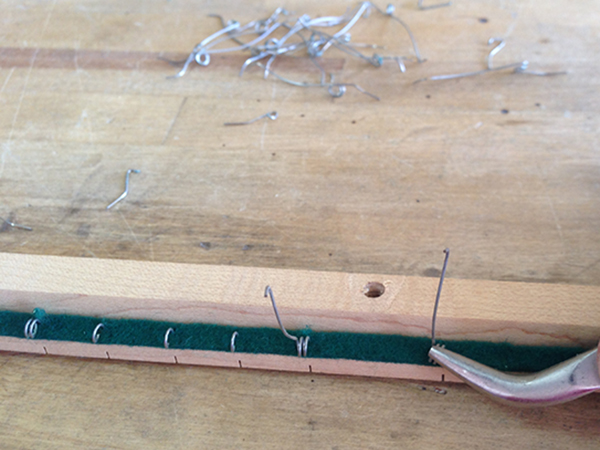
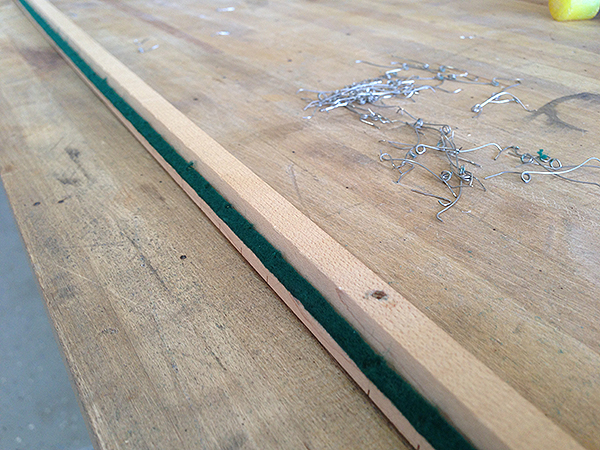
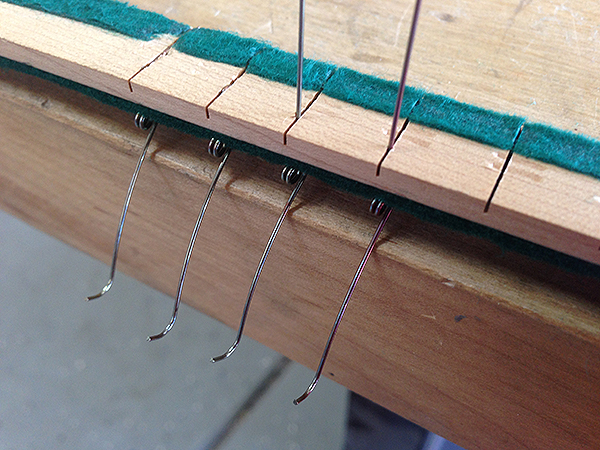
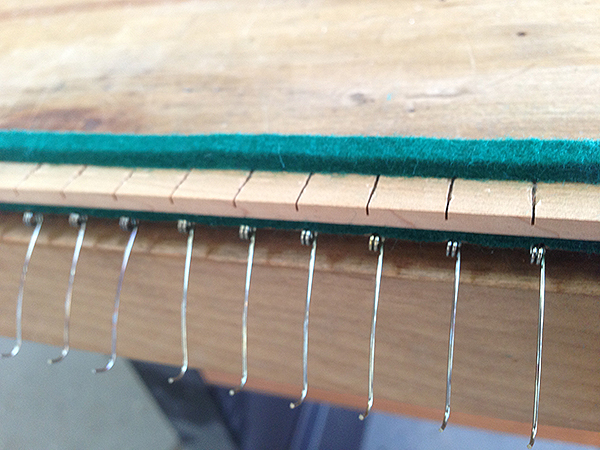
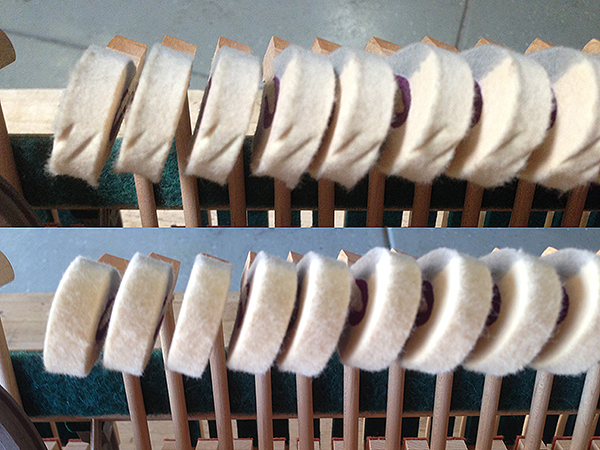
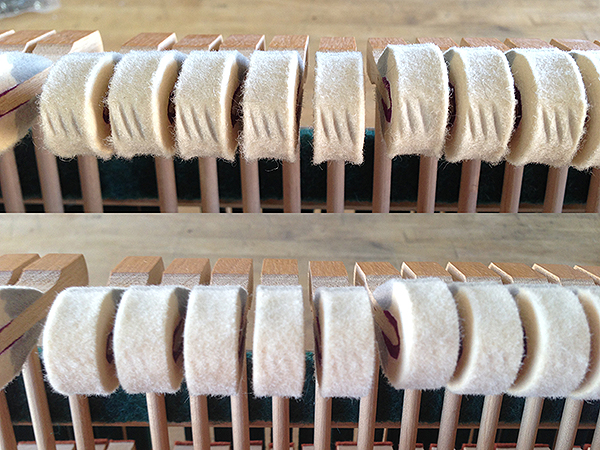
About the Author:
Mark Purney is a Registered Piano Technician and owns Mesa Piano Service, along with his wife, Dawn Purney. Mark is also a pianist and woodworker, and has a bachelor's degree in Electrical Engineering from Cleveland State University.